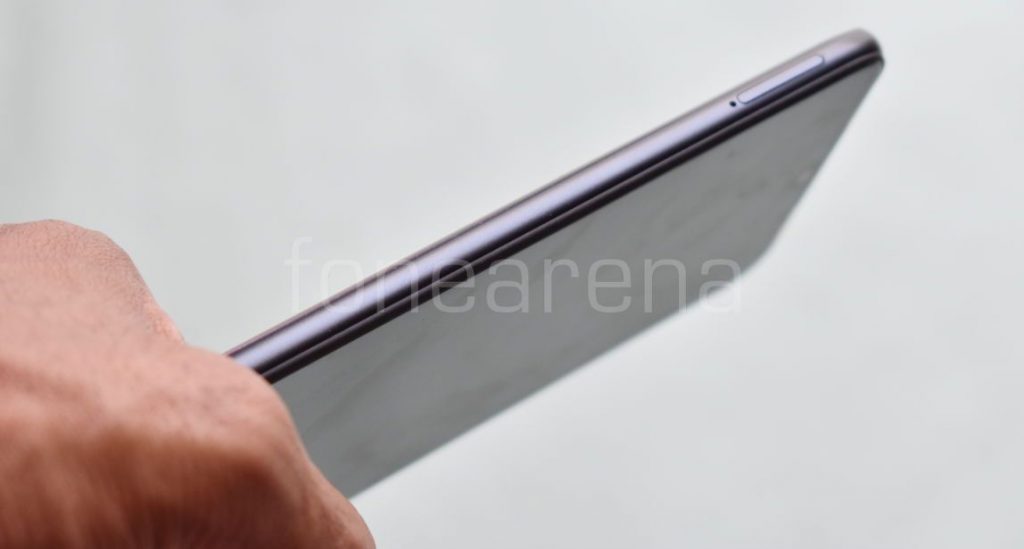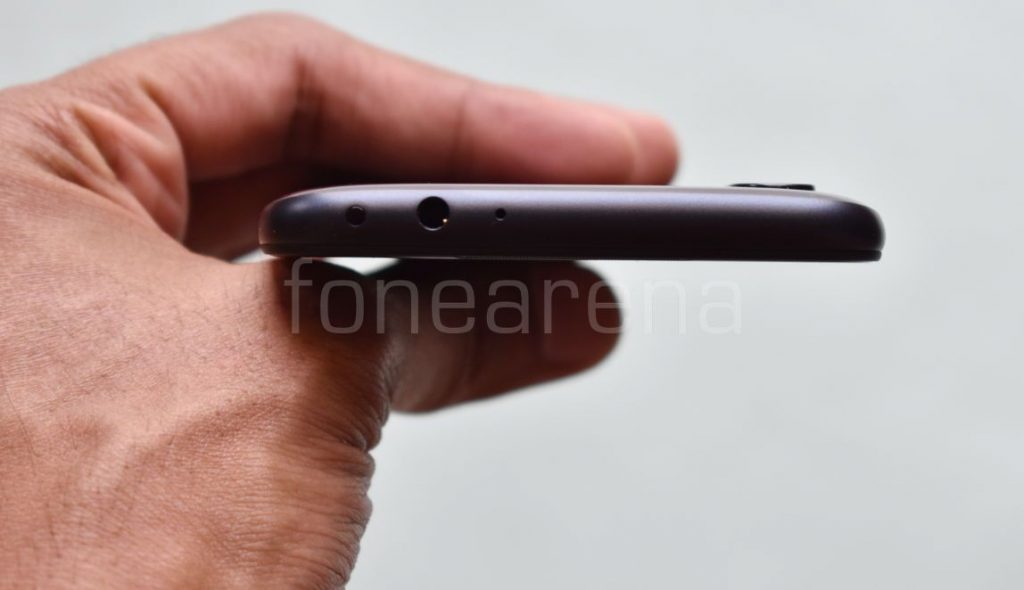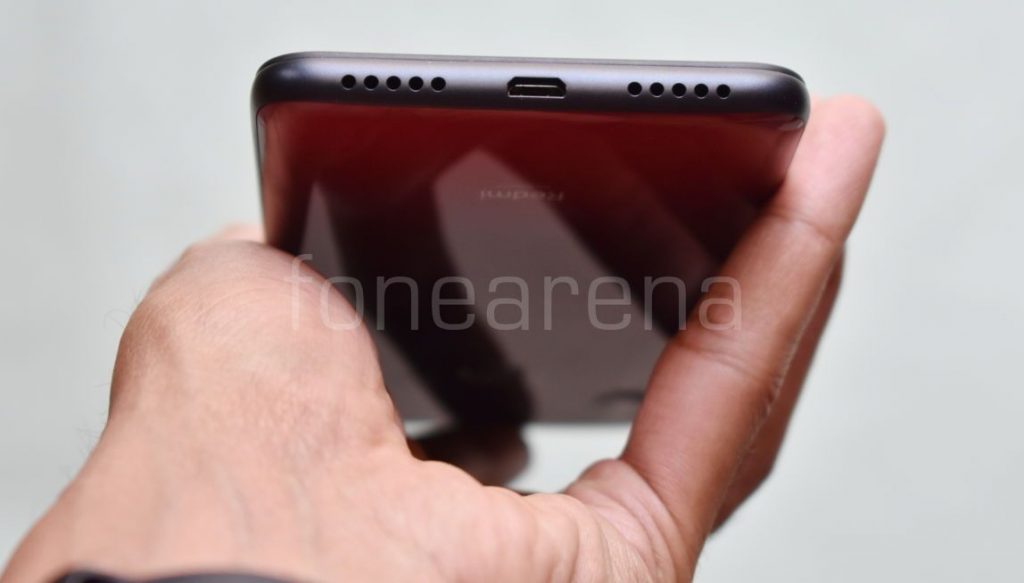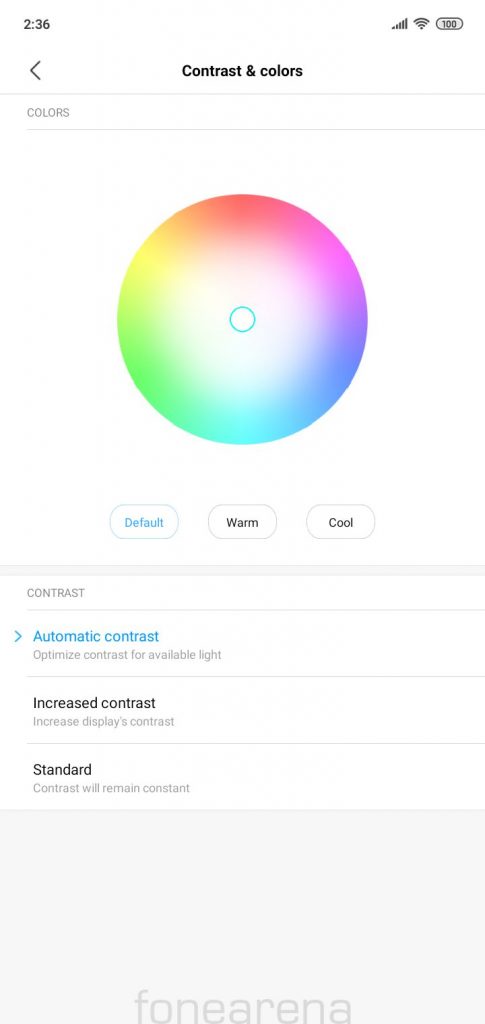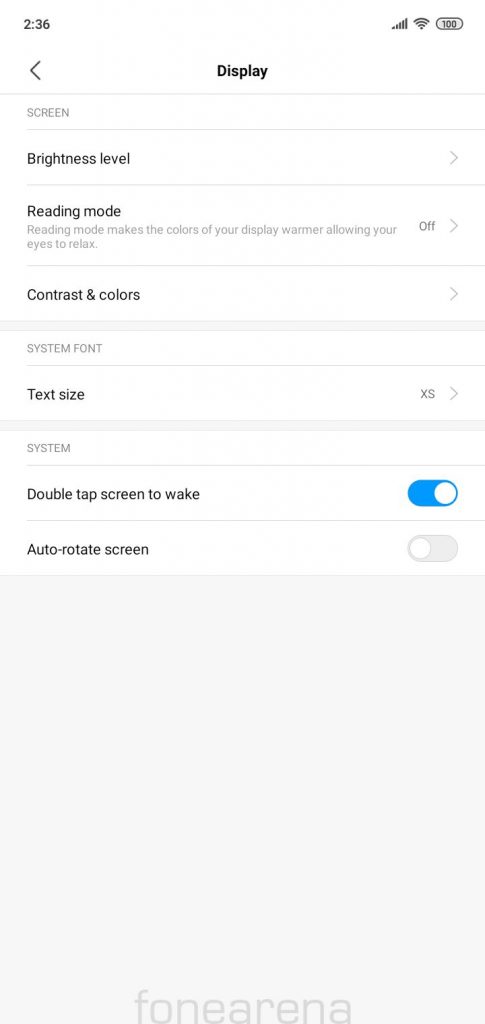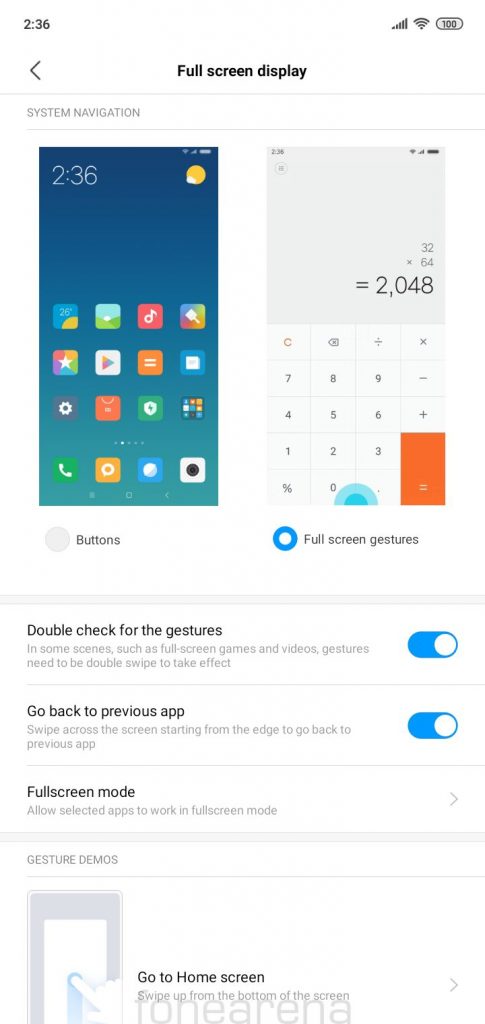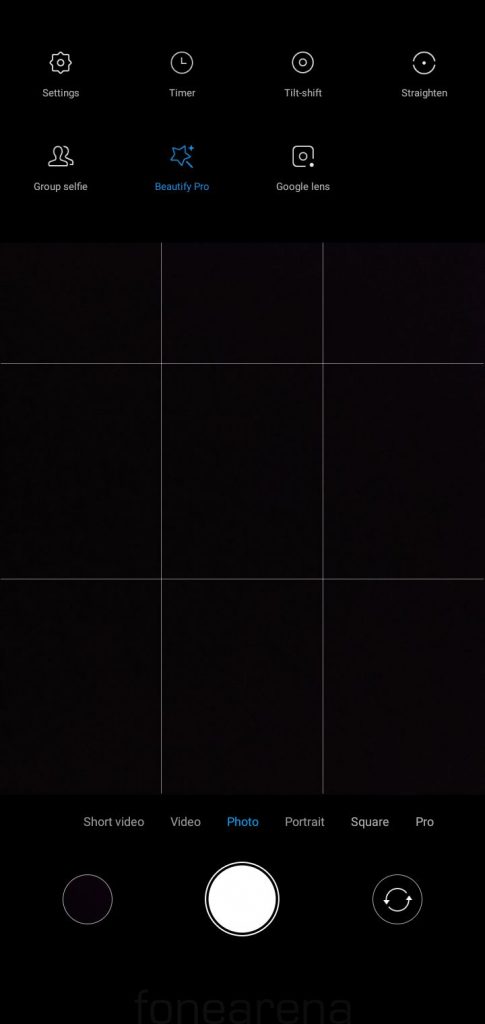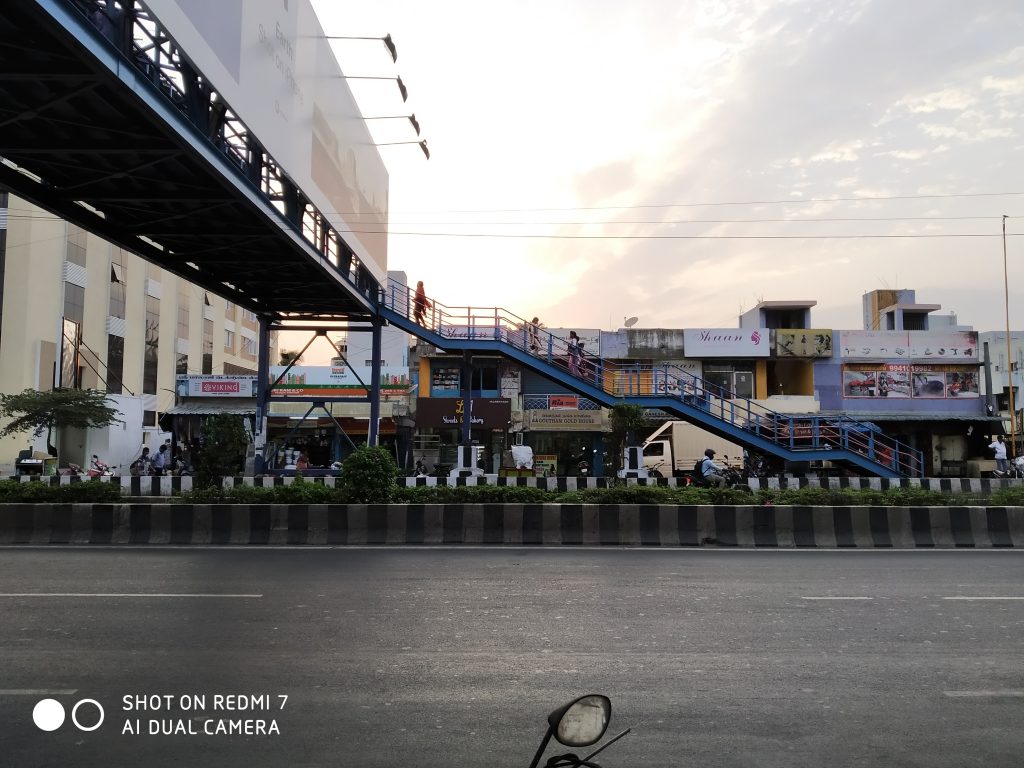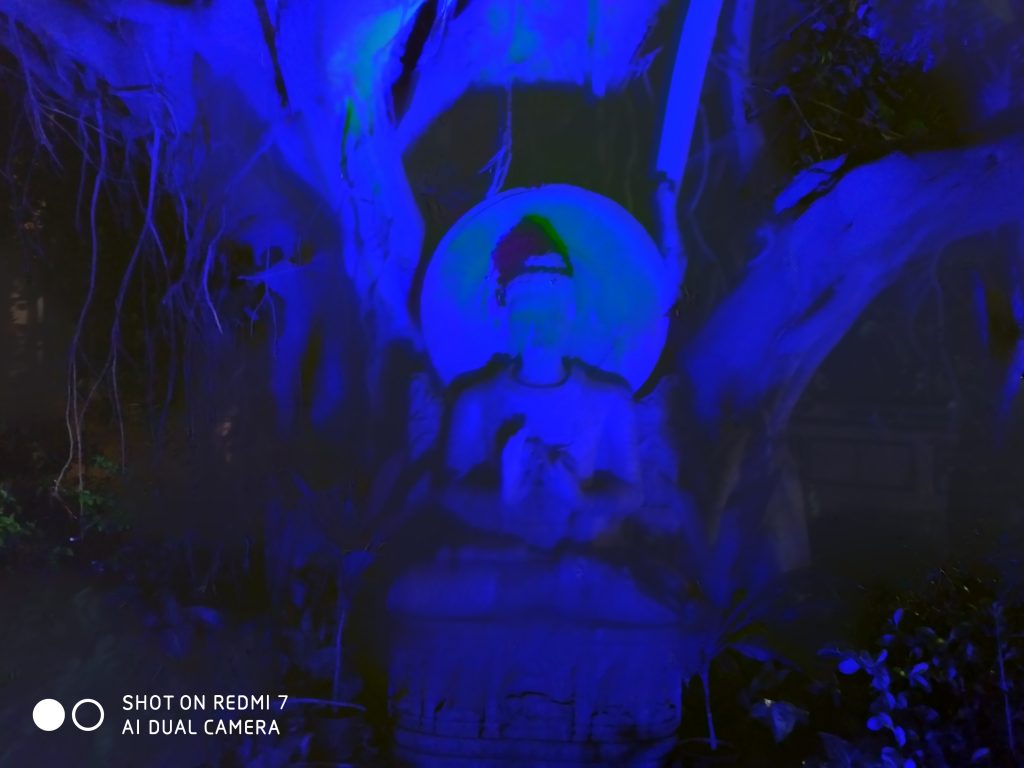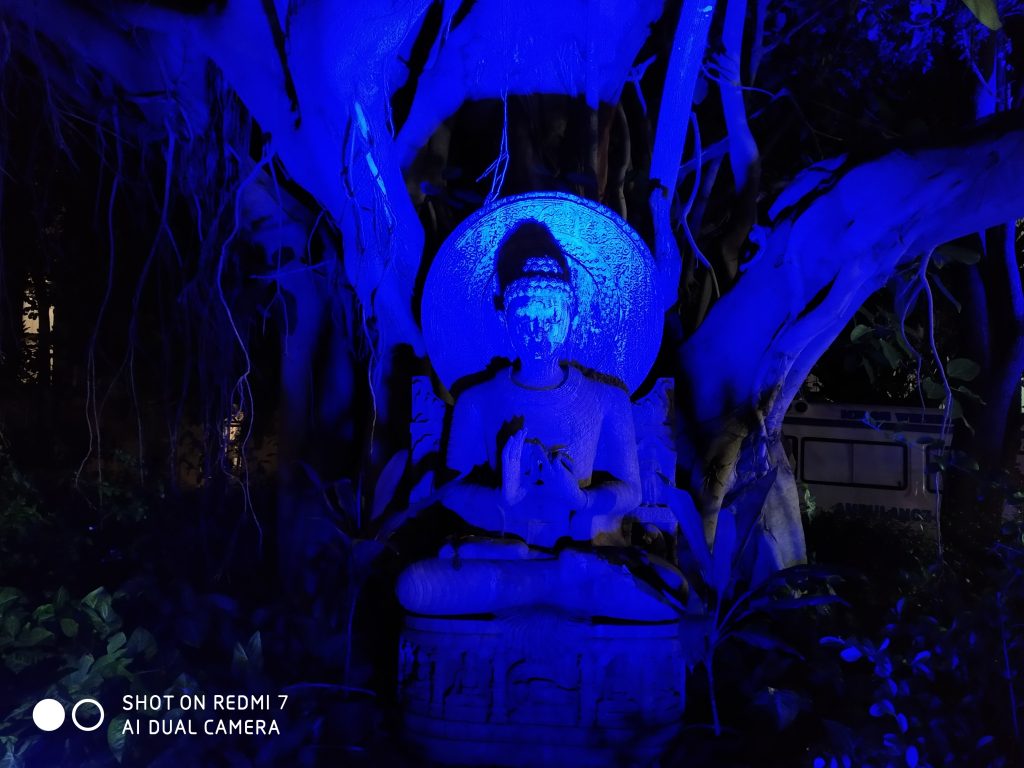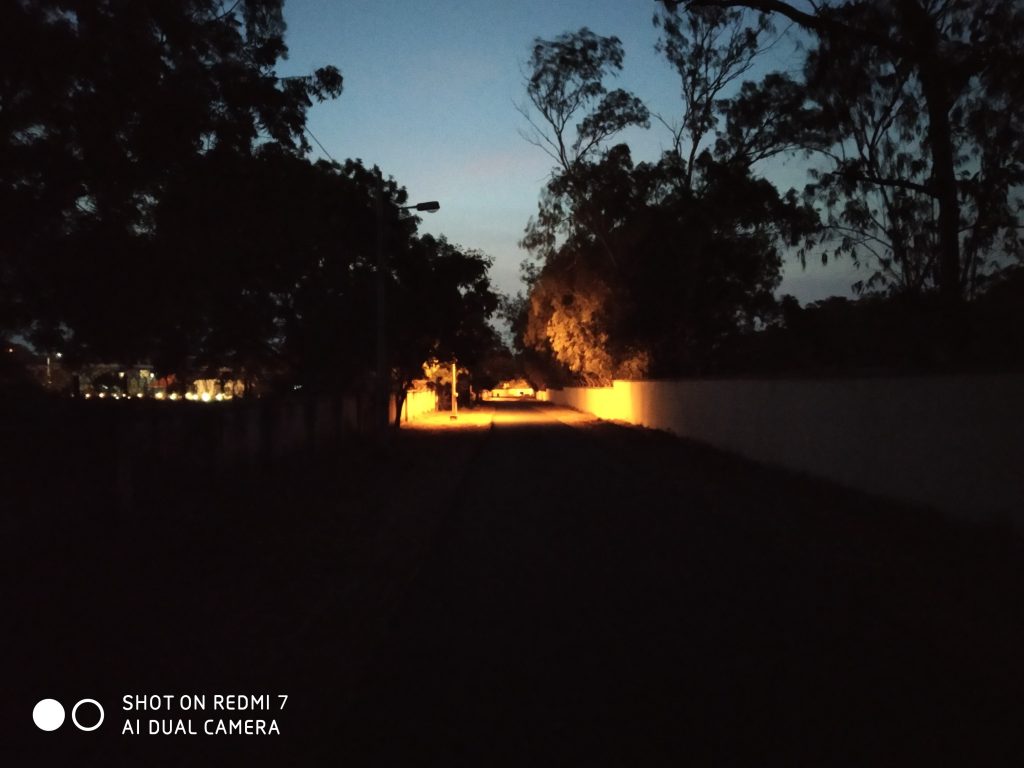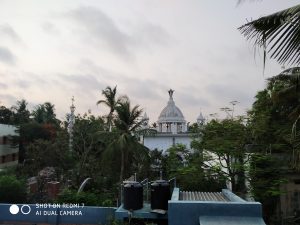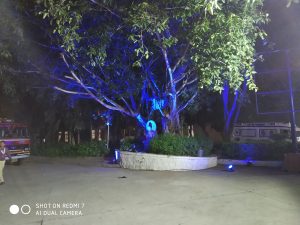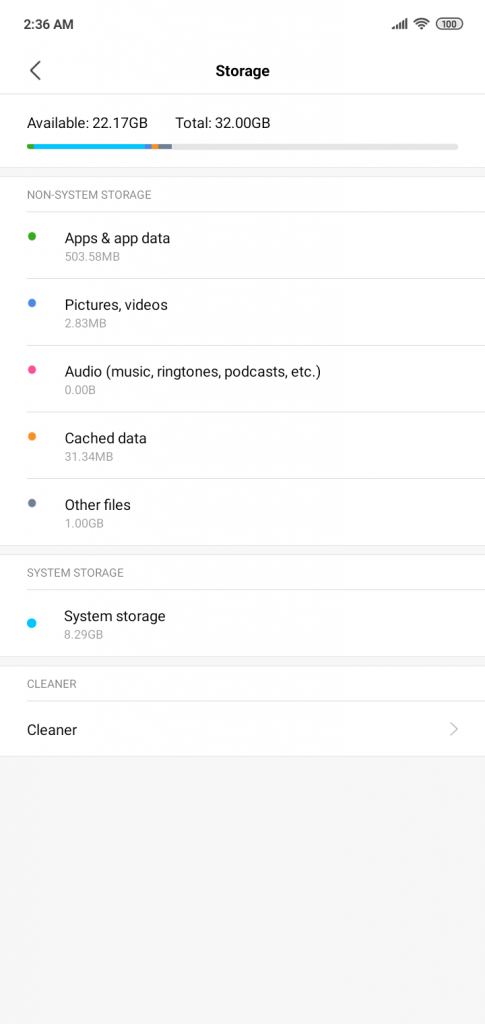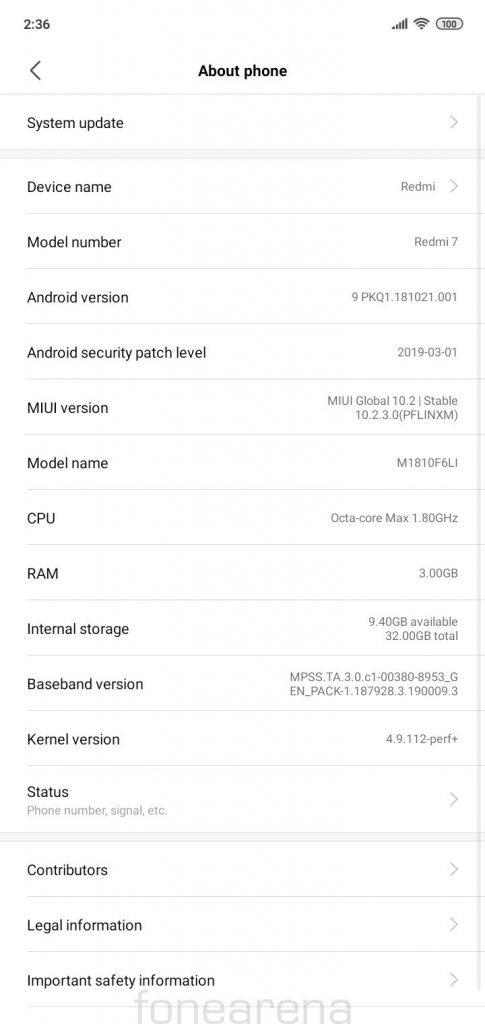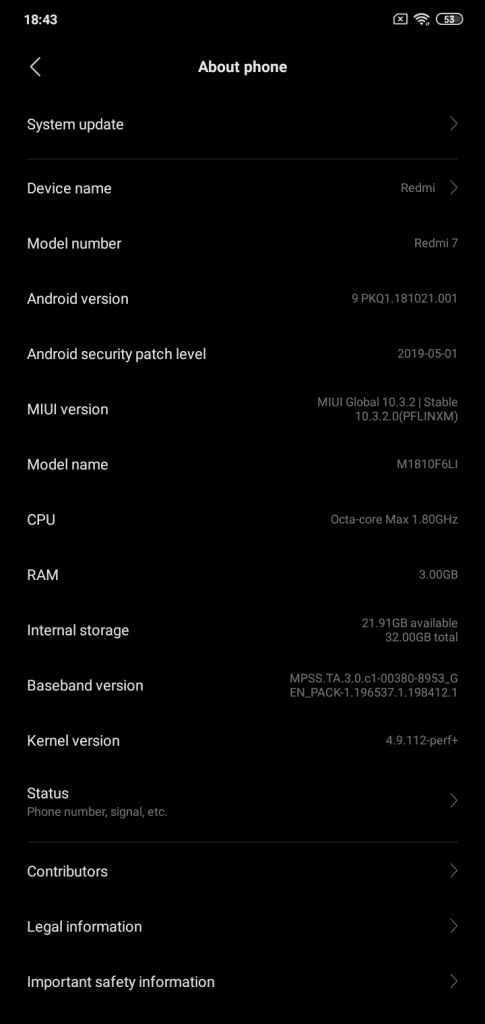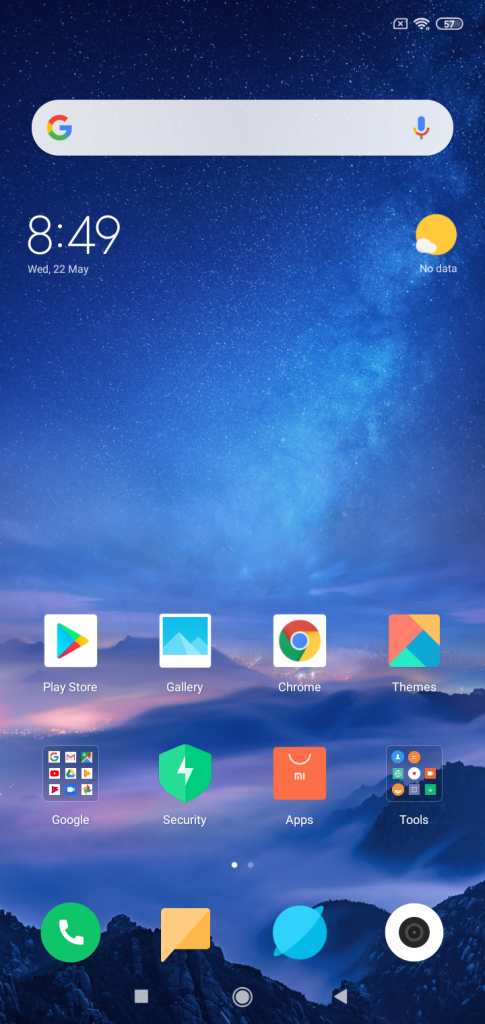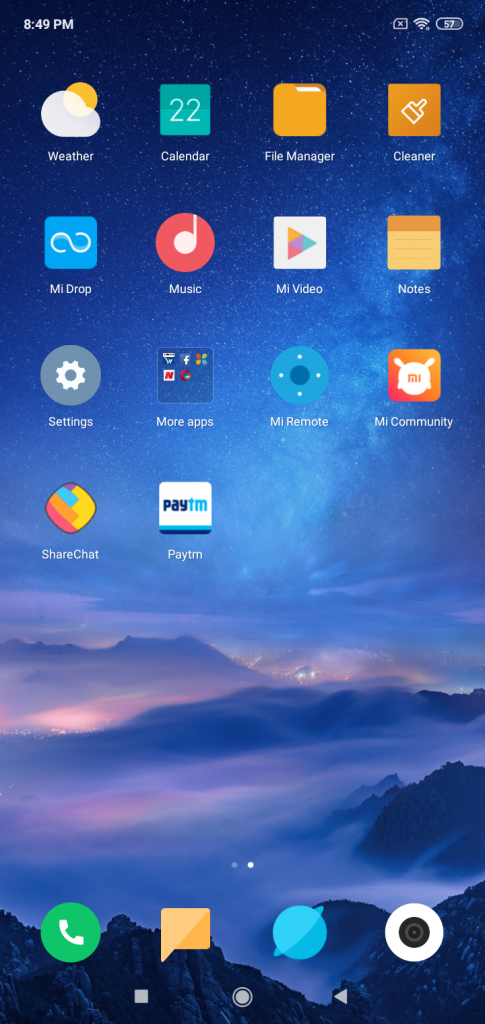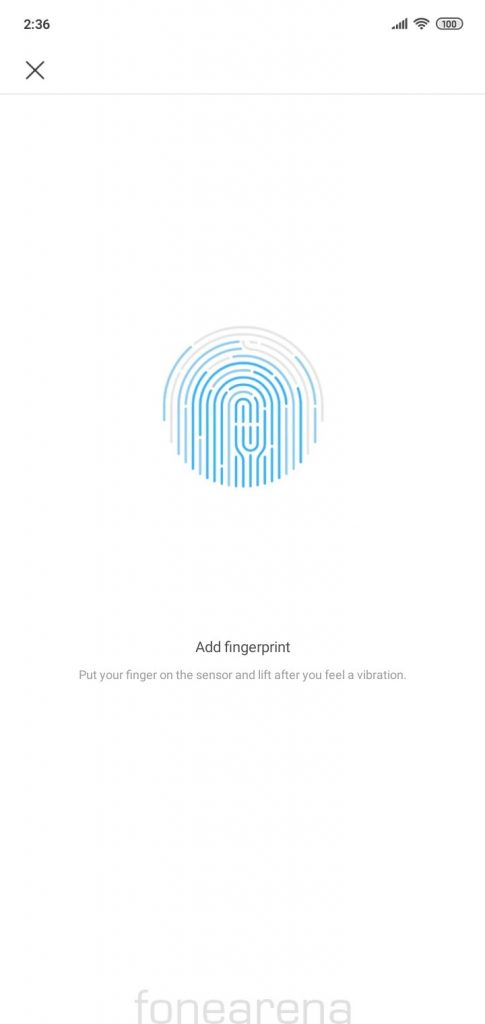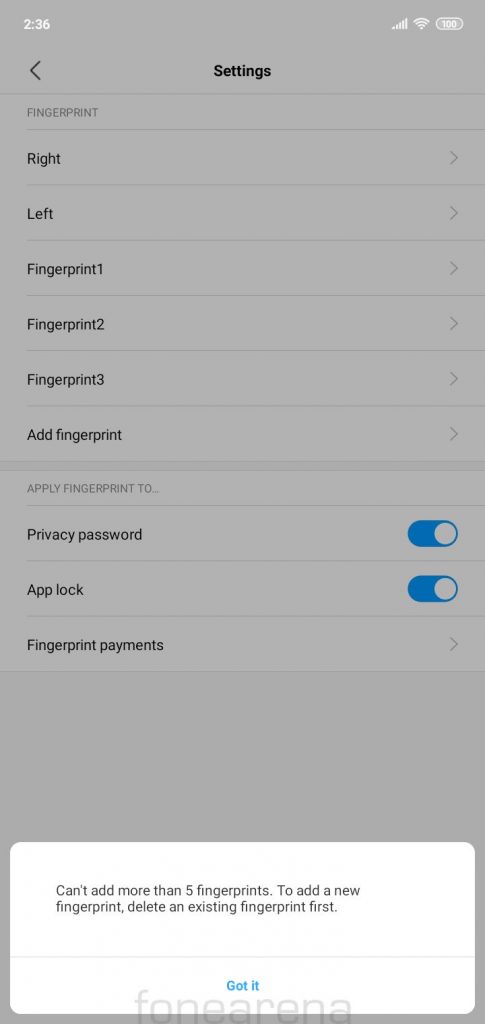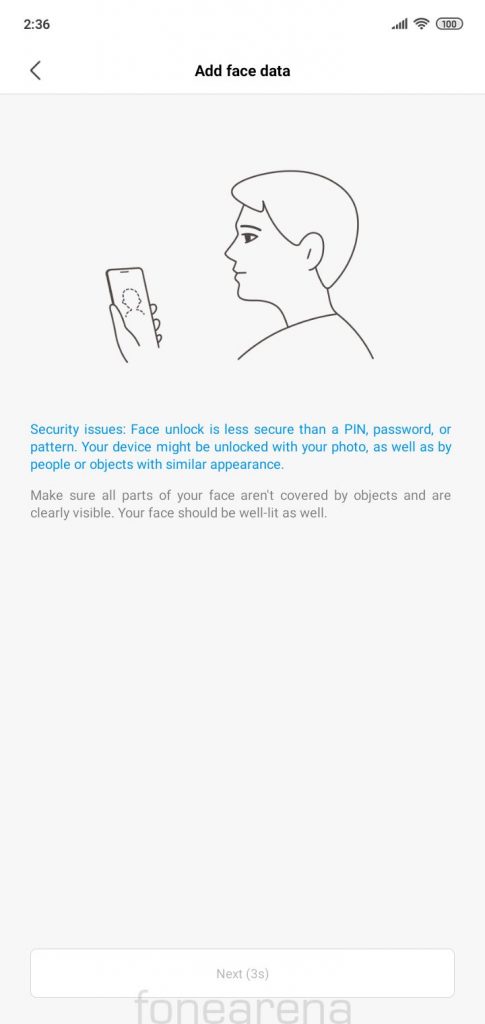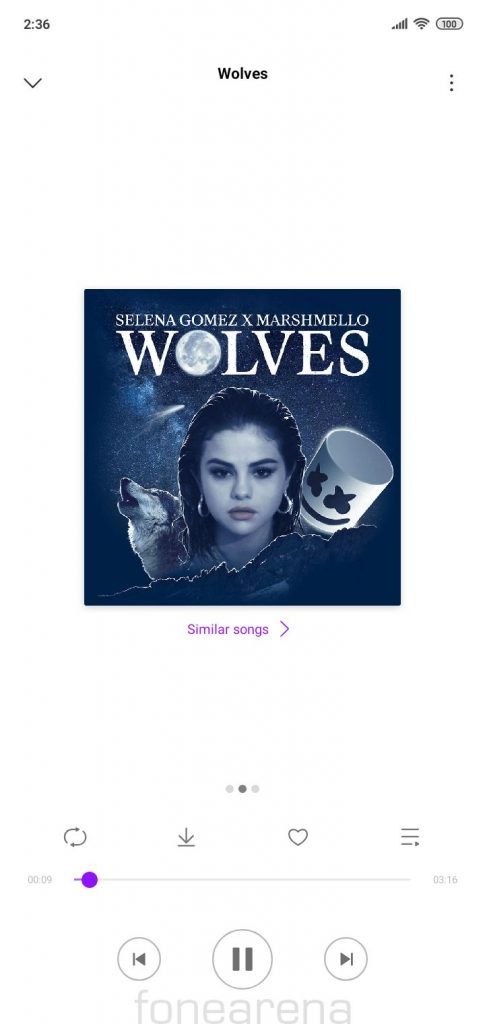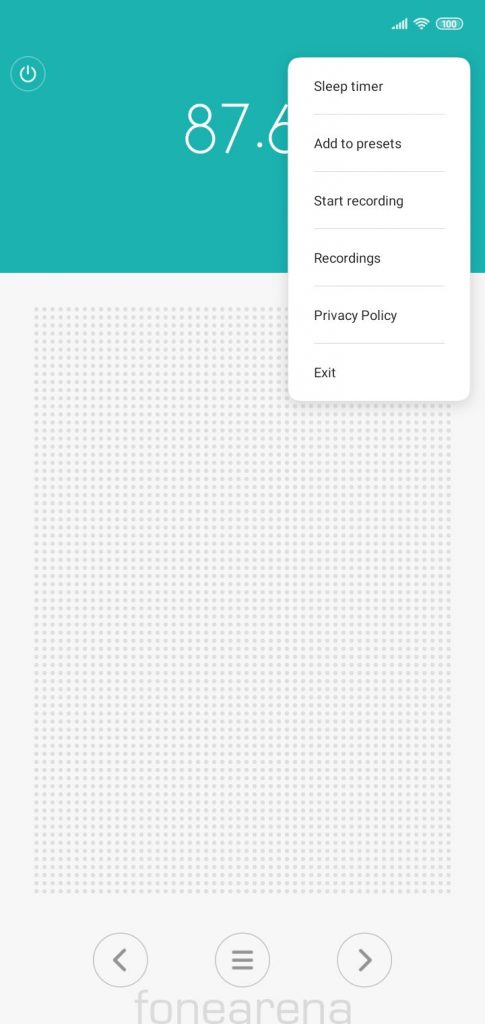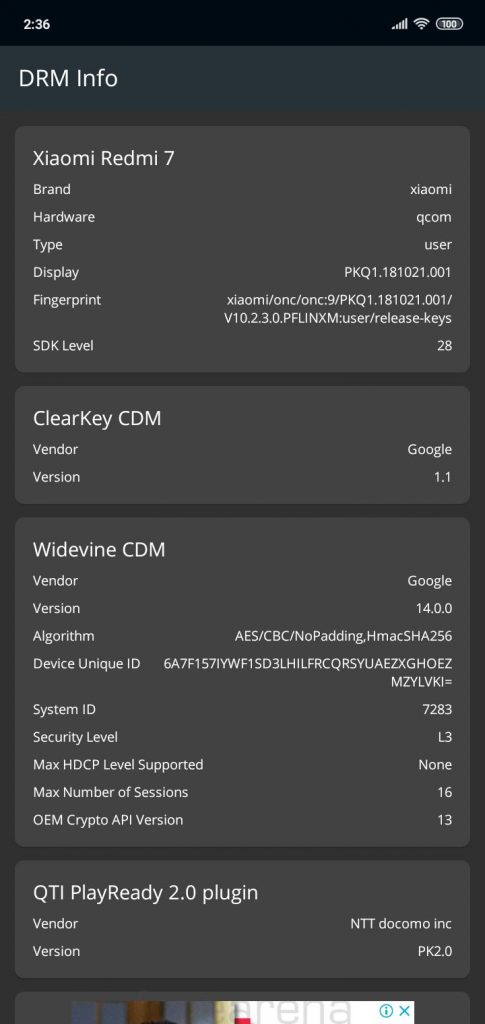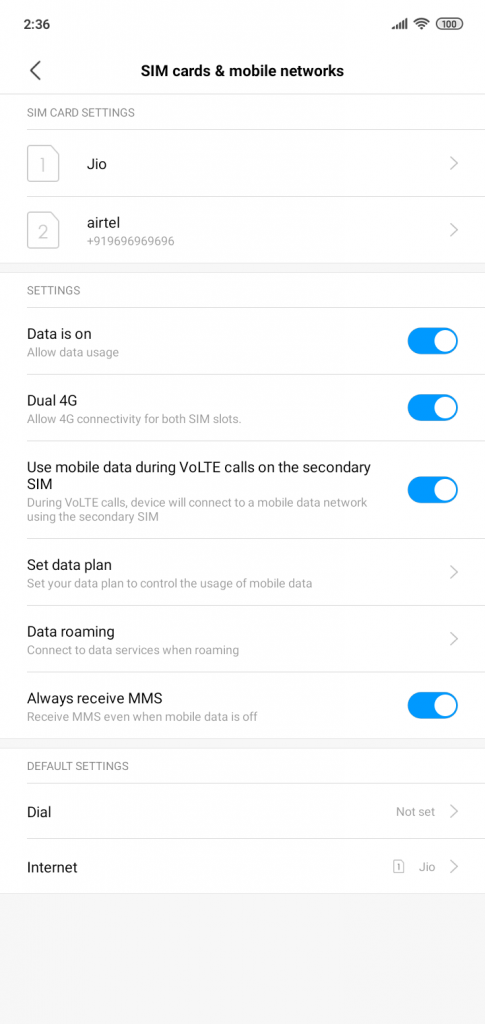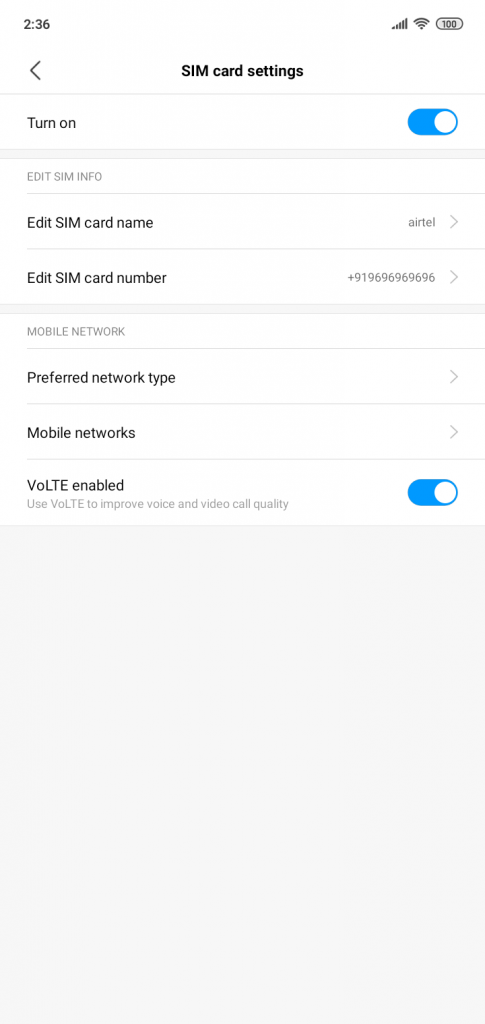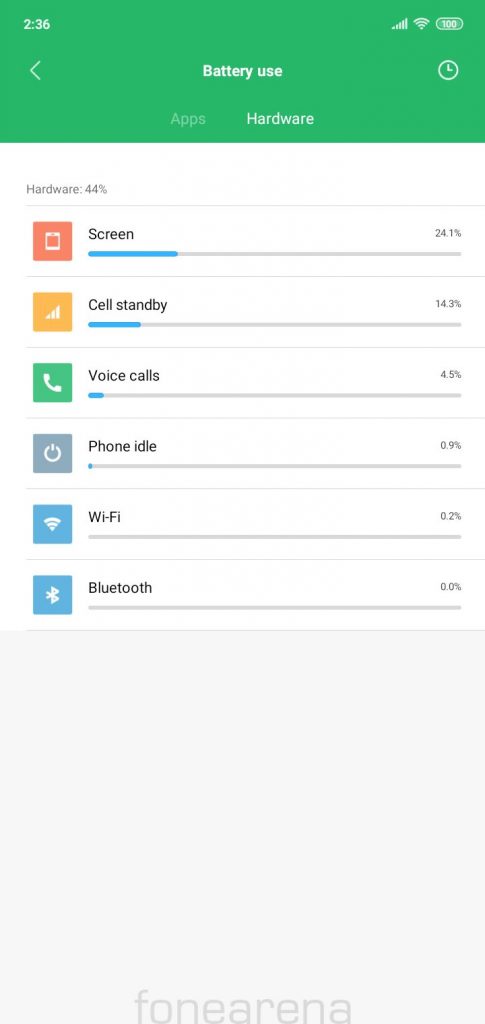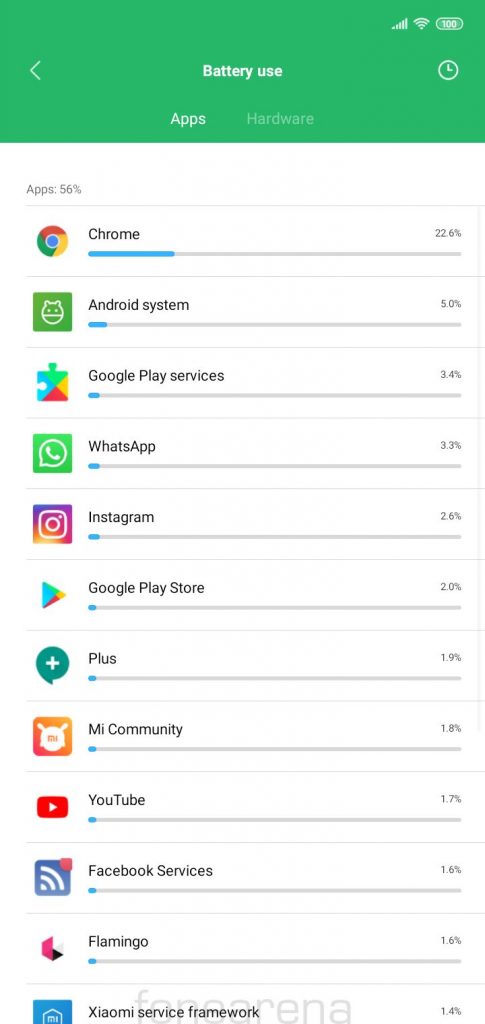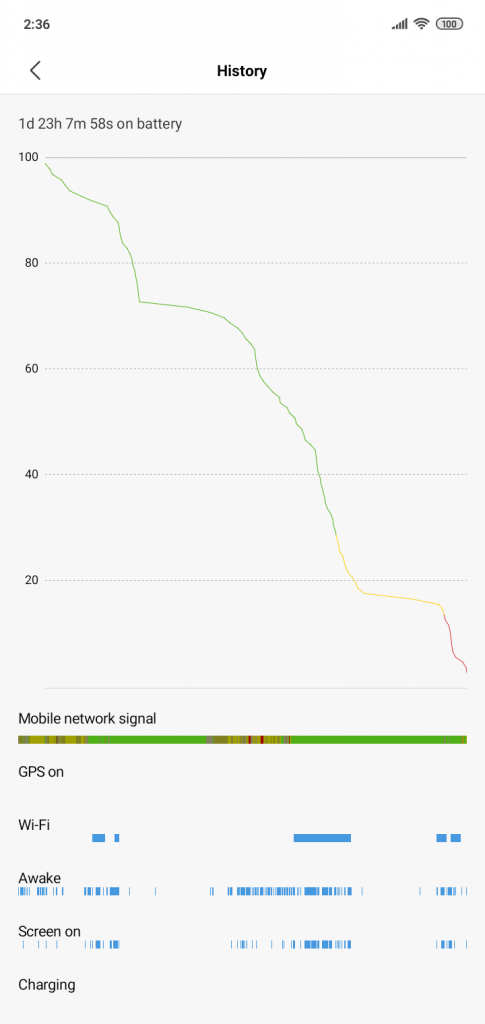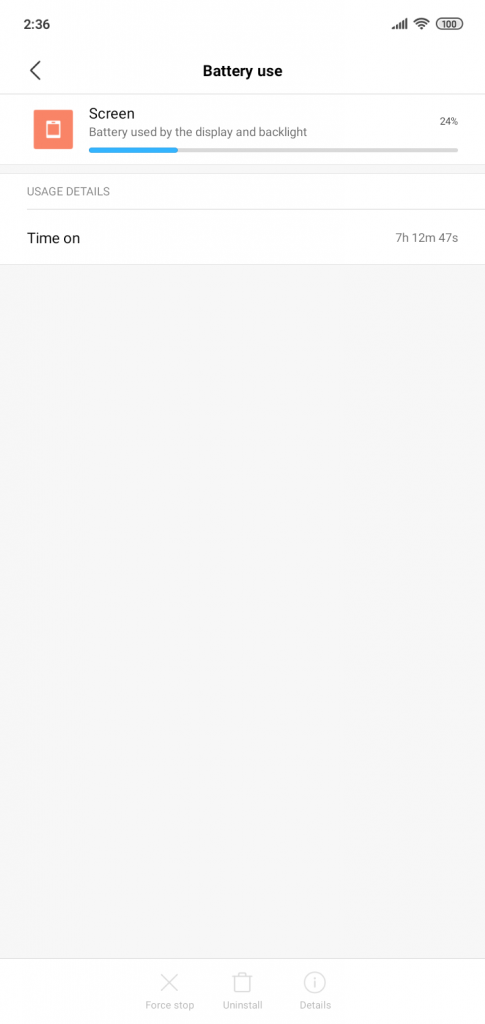
Xiaomi launched the Redmi 7 smartphone along with Redmi Y3 on April 24 in India. The Redmi 7 is an attempt to fix the shortcomings of Redmi 6, although Redmi 7 is a major upgrade compared to the last year’s Redmi 6 and Redmi 5 in terms of design, internals, and battery, but has Xiaomi managed to improve it enough to make you consider as your next phone? Let us dive into the review to find out.
Unboxing
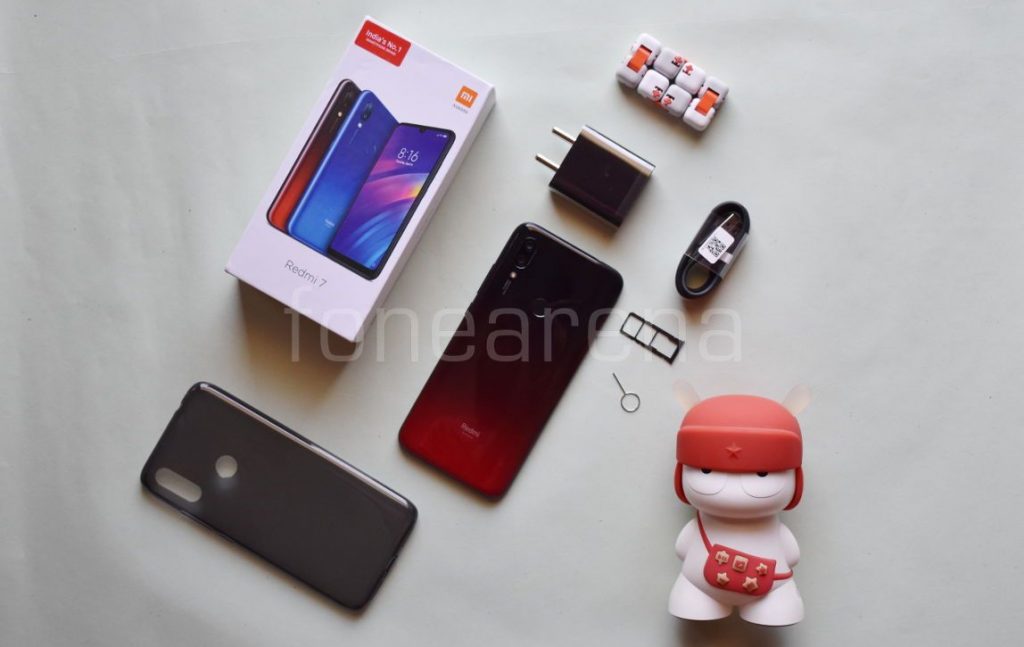
We recently unboxed the smartphone, check out the unboxing and first impressions.
Box Contents
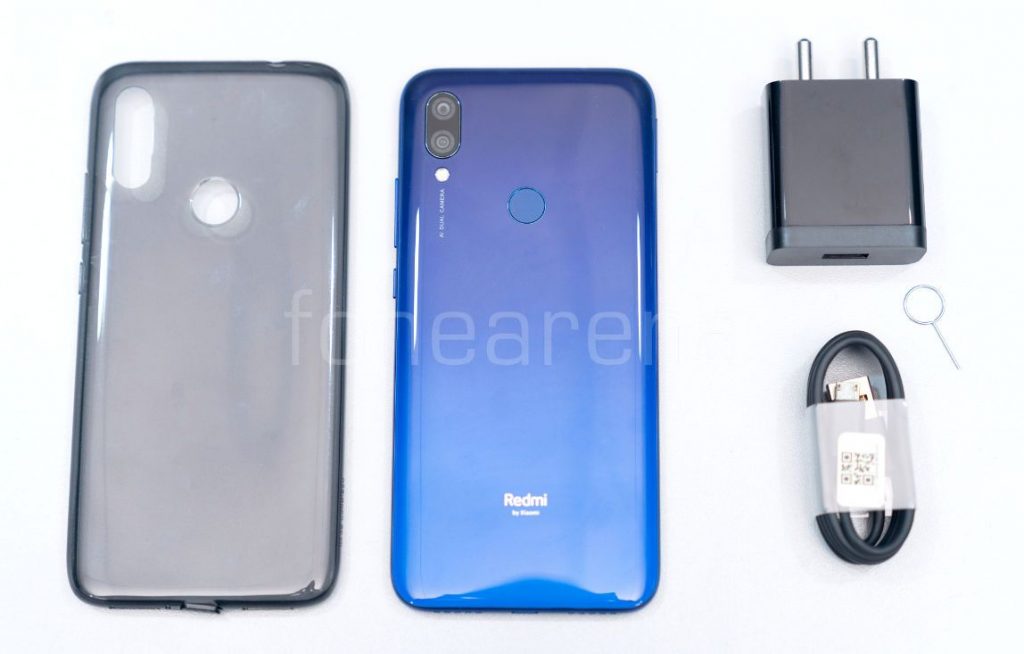
- Xiaomi Redmi 7
- 2-pin charger (5V-2A)
- Micro USB cable
- SIM ejector tool
- Protective case
- User guide
Design
Redmi series devices were known for the compact form factor, with Redmi 5 the company shifted to 18:9 aspect ratio and as a result, we saw a 5.7-inch display on Redmi 5. Xiaomi decided to go with a 5.45-inch display on Redmi 6 but this time the company has decided to put a 6.26-inch display on Redmi 7. Having used the 4-5 iterations of Redmi series of devices as my primary devices, Redmi 7 doesn’t feel like a phone from the same lineup.

The smartphone features a 6.26-inch modern bezel-less dot-notch display with a 19:9 aspect ratio protected under Corning Gorilla Glass 5 protection. The phone has a large screen (screen size is now very close to Redmi Note series) and has lost the compactness factor but it can be managed with a single hand if you have big palms. It has about 81% screen-to-body ratio, similar to the Redmi Note 7 series.

There is a small bezel below the display. The notification LED has been moved to the bottom edge that glows in white color.
Talking about the placement, the right side of the mobile have volume and power buttons, with tactile feedback. On the left, MicroSD and dual SIM slot can be found that accepts two nano-SIMs and a microSD, in addition to 32GB internal storage.
Redmi 7 retains 3.5mm headphone jack and IR emitters that can be found on top along with secondary noise cancellation microphone. Charging port (still micro USB) can be found at the bottom along with grilles on both sides, the right side houses a speaker inside and left side houses the primary microphone.
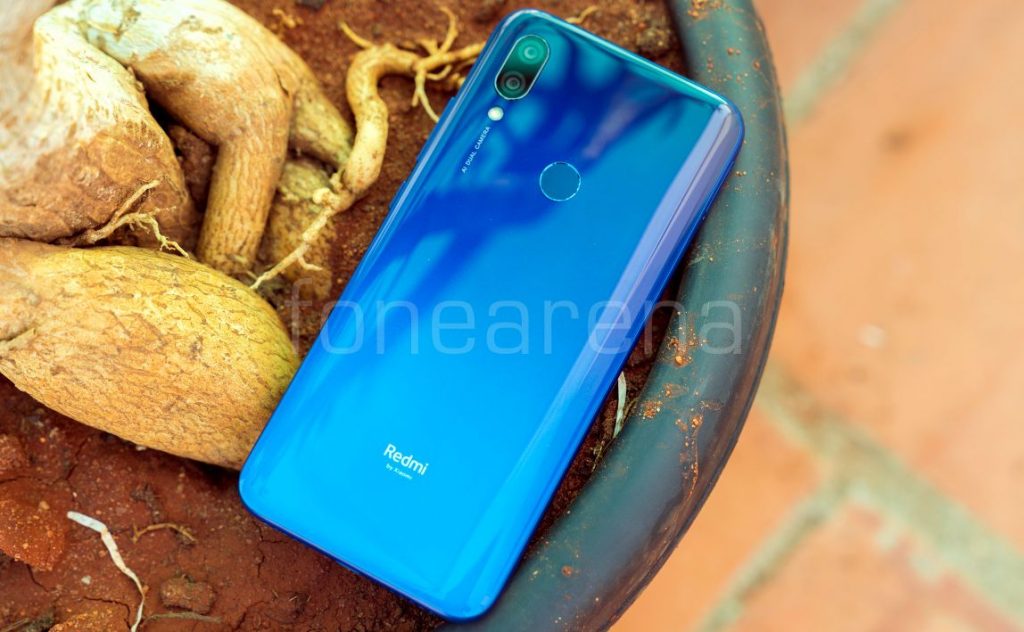
Redmi 7 features a polycarbonate back similar to its predecessor but it comes with Aura smoke design making it look different from the previous gen Redmi devices. The phone has a plastic finish on the sides, so there are no issues for the signal reception.
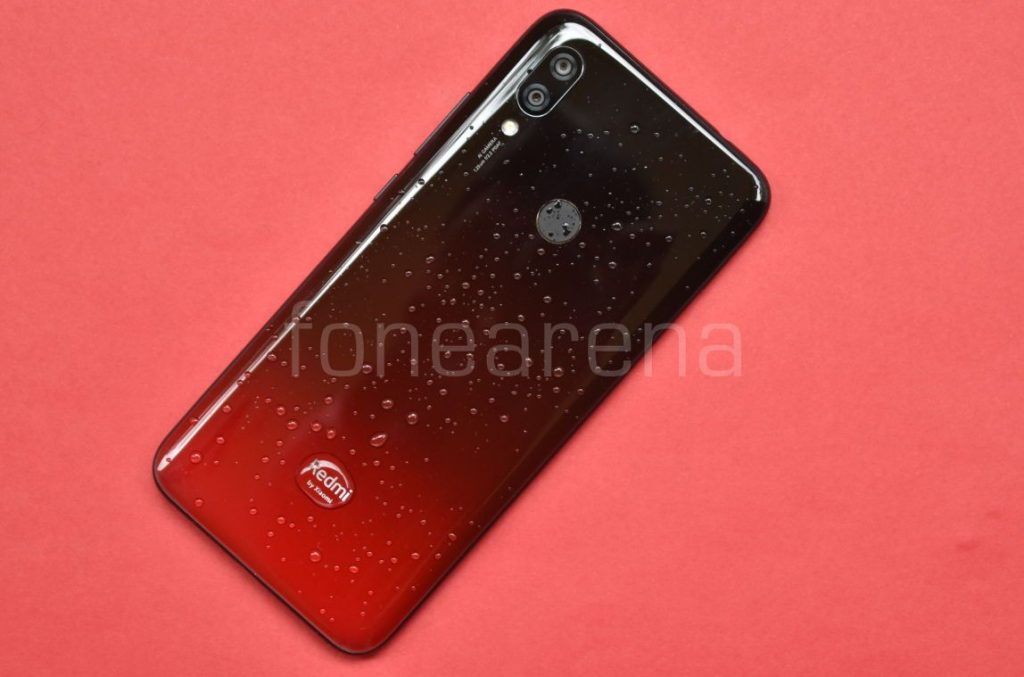
The phone has P2i nano-coating making it splash proof and it can also withstand light rain, but can’t be immersed in water since it lacks IP rating. On the back, we now get Redmi branding as Redmi is a separate sub-brand in China.
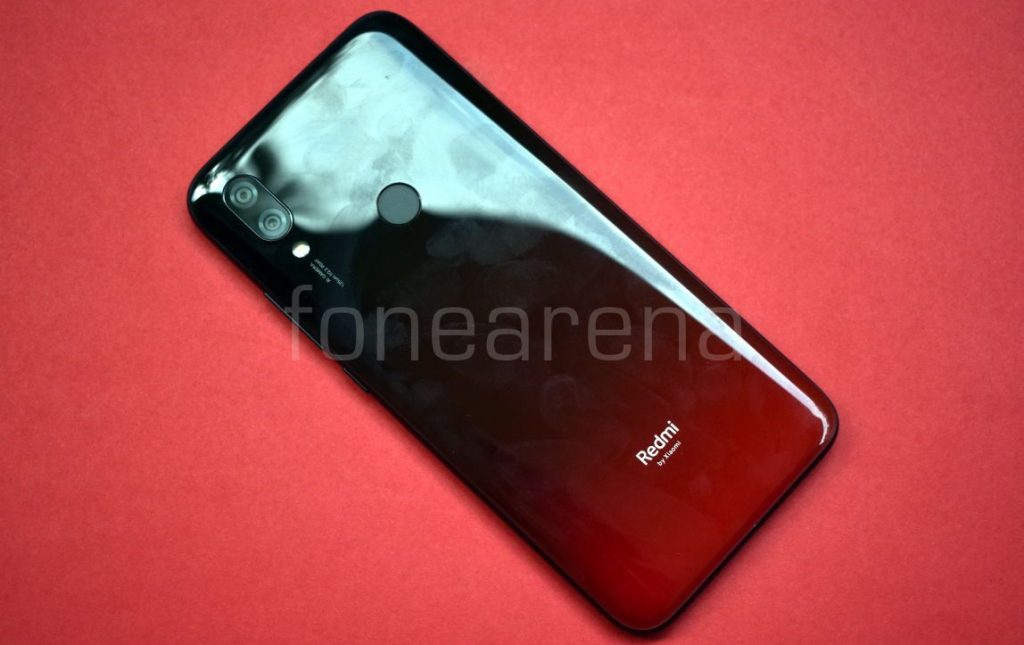
The phone is 8.47mm thick, 75.58mm wide and weighs 180 grams, but there is a camera bump which makes phone wobble when placed on a flat surface. Xiaomi has also bundled a TPU case with the phone and it does a decent job protecting the camera bump. The polycarbonate back is a fingerprint magnet and is prone to scratches, in my two weeks of usage my device has picked up some scratches due to dust particles even with the TPU case.
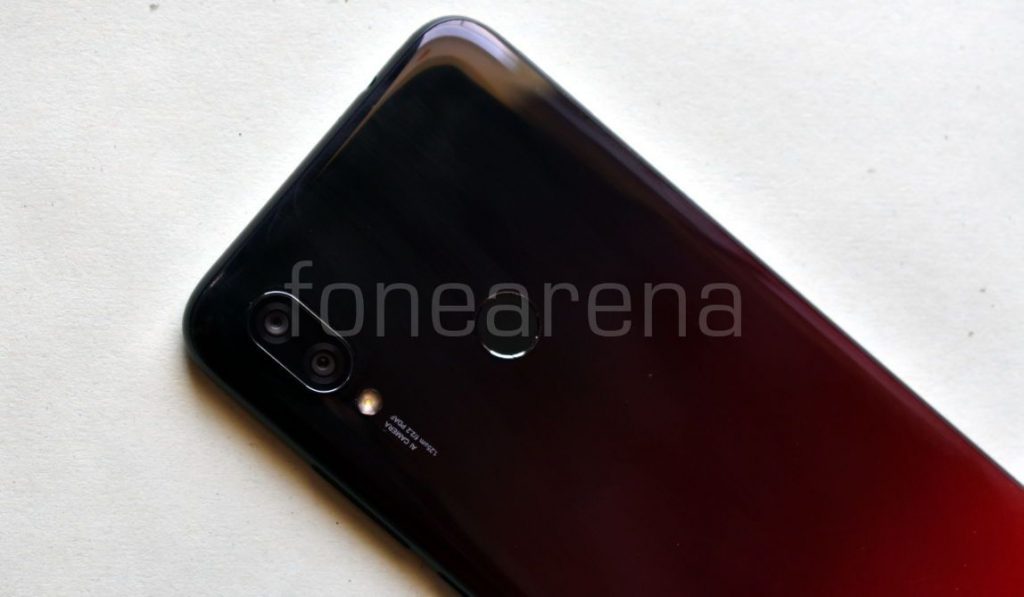
Redmi 7 packs dual cameras at the back arranged in a vertical array, the primary shooter is a 12-megapixel sensor with another 2-megapixel secondary depth sensor, the single-tone LED flashlight can be found below the camera module. The camera bump makes phone wobble when placed on a flat surface, however, the camera lens doesn’t get scratched easily, seems like it has some kind of scratch-resistant glass.
Display

The Redmi 7 has a large 6.26-inch HD+ display with a pixel resolution of 1520 × 720 pixels and a pixel density of about 269 PPI. It features a dot-notch display 19:9 aspect ratio 2.5D curved glass screen with rounded corners. The display is bright even in sunlight, thanks to 450 nits brightness and 1500:1 contrast ratio and the colors are vibrant since it has 84% of NTSC color gamut but it would have been better to put a display with 500 nits brightness similar to Redmi 6 Pro display. The display also has Corning Gorilla Glass 5 protection but during our usage, the display has picked up minor scratches, so it’s better to put some protection on it.
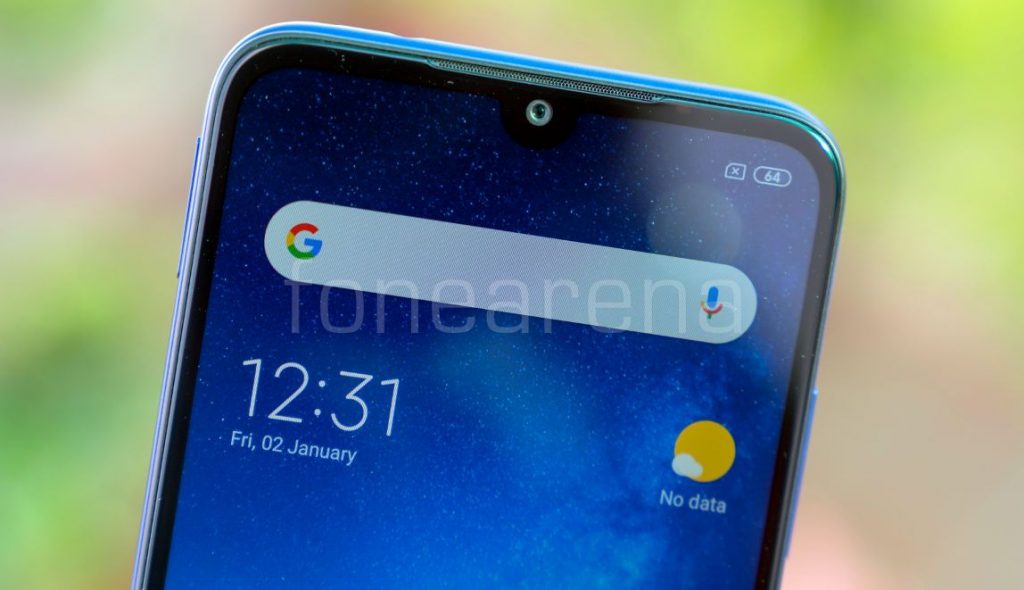
Similar to the Redmi Note 7 series, there is an earpiece on the top edge above the display. The usual set of proximity and ambient light sensors are present on the right side of the earpiece on the bezel and are hardly visible. There is also an 8-megapixel camera on the front with f/2.0 aperture.
The option to hide the notch was missing in the stock build but it is now available after MIUI Global Stable 10.3.2.0 update. Under the display settings, there are different options to adjust colors and contrast based on your preference. MIUI also offers a reading mode that lets you reduce the blue light emission so it doesn’t cause eye strain when you use your device at night.
Camera

Redmi 7 packs dual cameras at the back arranged in a vertical array, the primary shooter is a 12-megapixel sensor with f/2.2 aperture and large 1.25μm pixel size which is accompanied by another 2-megapixel secondary depth sensor for portrait shots, it also comes with AI features but the night mode found on Redmi Note 7 series is missing here. The LED flashlight can be found below the camera module. On the front, it features an 8-megapixel front camera with f/2.0 aperture and 1.12μm pixel size unlike it’s larger sibling which features a 32-megapixel selfie shooter.
The camera UI is similar to other Xiaomi smartphones running MIUI 10 with flash, HDR, AI (that can detect 33 scene categories for rear and 12 scene categories for the front camera), color modes (Normal, Vivid, Film, Amour, Latte, Sun, Cookie, Calm, Soda, Gourmet, Glow, Berries, B&W and Fade) on the top. Pressing the menu option shows timer, tilt-shift, straighten, group selfie, beautify and Google Lens. There is a front camera toggle on the bottom along with an option to select modes such as Short Video, Video, Photo, Portrait, Square, and Pro mode to adjust white balance, shutter speed (1/1000s to 32 seconds) and ISO (ranging between 100 to 3200). Beautify option (that can be set from 1 to 5) is available for both front and rear cameras. The night mode which is available on Redmi Note series devices is not present here.
Xiaomi has enabled Cam2API by default on the Redmi 7, and so users can sideload ported Google Camera apks for advanced editing including RAW capture, a working apk can be downloaded from here.
The camera quality is decent for the price. Images with AI and HDR are better. Low-light shots are decent, but most shots have noise. Check out some camera samples below (Click the image to view full-resolution samples).
It can record videos at 1080p resolution at 30 fps, which is decent.
Software, UI, and Apps
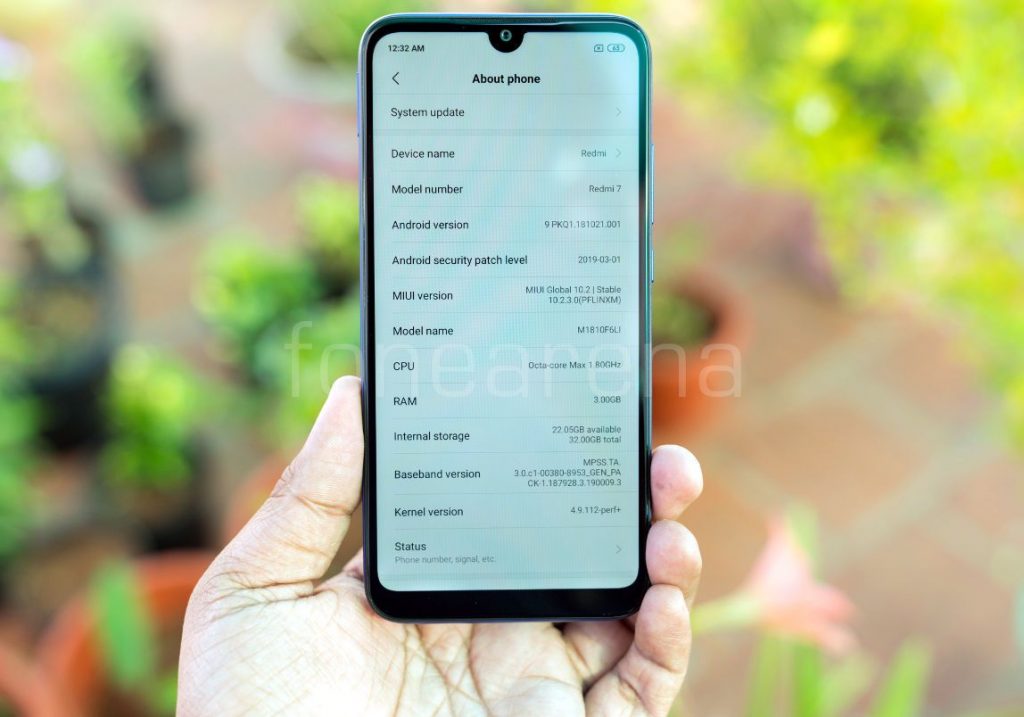
Redmi 7 runs on latest Android 9.0 (Pie) out of the box with MIUI 10 on top with Android security update for March 2019, Xiaomi has also rolled out MIUI 10.3 update bringing May 2019 security patch, system-wide Dark Mode, Face unlock for App Lock, along with several bug fixes and optimizations.
Out of 3GB RAM around 1.8GB RAM is usable, and about 1GB of RAM is free when default apps are running in the background. Out of 32GB, you get about 22GB of free storage.
Apart from the usual set of utility apps, some Google apps and Xiaomi’s own set of apps, it comes pre-loaded with some bloatware like Amazon Shopping, Facebook, Dailyhunt, Opera News, Opera Mini and ShareChat apps which can be uninstalled easily. Xiaomi is infamous for showing ads on its phones with MIUI, which the company says is done in order to support the development cost of its own apps. If you don’t want to see ads, you have to disable recommendations while setting the phone up, promoted apps and in Xiaomi’s own apps such as Music, Mi Video, File Manager, Mi Drop, App Vault, Cleaner, and others. You can also uninstall these apps by following the procedure here without rooting the phone.
Fingerprint Sensor and Face unlock
The phone has a fingerprint sensor on the back, we found it fast, accurate and reliable during our time with the device. The phone can be unlocked by even a short tap on the fingerprint sensor. Users can add up to 5 fingerprints which can also be used for app lock and payments in apps. The phone also has face unlock which is slower if you compare it with the fingerprint unlock method, it is also not as secure as fingerprint since it can be unlocked with a photo. It also doesn’t work if you use sunglasses or hats.
Music Player, FM Radio and Multimedia
The Mi Music Player is the default music player which also has online streaming integration from Hungama. MIUI also offers headphones and audio effects which also has an equalizer option. It also has FM Radio with recording. Audio through the speaker is just average and there is some voice distortion on full volume, not sure if there is an issue on our unit. Since the speaker is present on the bottom, audio doesn’t get muffled when the phone is on a flat surface. Redmi 7 comes with Widevine L3 support and lacks L1 which lets you enjoy HD content on Hotstar, Amazon Prime Video, Netflix and other streaming apps, though L1 certification is not expected in this price range, some devices in this price segment like Samsung Galaxy A10 offer Widevine L1 support.
Dual SIM and Connectivity
Redmi 7 lacks 5 GHz Wi-Fi band and has support for 2.4 GHz band only, it uses Bluetooth 4.2, GPS + GLONASS. Snapdragon 632 features integrated Snapdragon X9 LTE modem that has support for 4G connectivity and also has Voice-over-LTE (VoLTE) support for Reliance Jio, Airtel and supports Dual 4G VoLTE, so you can use 4G on both the SIMs on Redmi 7. It also lacks Wi-Fi passthrough that lets users use Wi-Fi and Wi-Fi hotspot at the same time.
The dialer and messaging UI are similar to other Xiaomi smartphones running MIUI 10. Since this is a dual SIM phone, you get the option to select either SIMs when calling or sending a text message. We did not face any call drops and the earpiece volume is good as well.
Performance and Benchmarks
Coming to the benchmark, the Redmi 7 is powered by an Octa-core Qualcomm Snapdragon 632 64-bit 14nm mobile platform based on FinFET technology with Adreno 506 GPU. As it can be seen from the synthetic benchmark scores below, it is clear that the Snapdragon 632 SoC is better than the Snapdragon 625 found on previous gen Redmi 6 Pro but it is not as good as Snapdragon 636 that powers Redmi Note 5 Pro and Redmi Note 6 Pro.
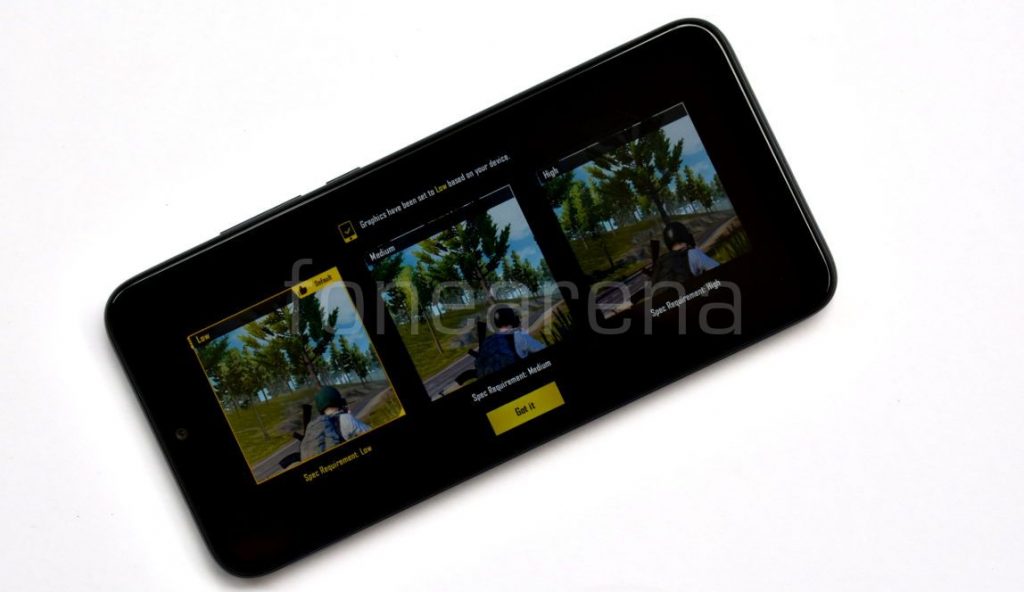
PUBG runs in low graphics by default and the gameplay isn’t smooth either, we did encounter occasional frame drops during PUBG session. It gets a bit warm on intensive gaming and 4G data use, but it doesn’t too hot to handle. With that said, if you’re not into heavy gaming, the phone will not disappoint you with day to day performance. Check out some synthetic benchmark scores below.
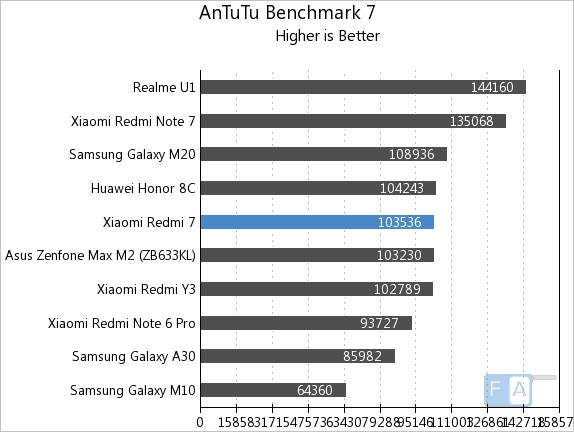
It scored 103536 in Antutu benchmark leaving Asus Zenfone Max M2 behind but lost to Honor 8C by a little margin, all three phones are powered by the same processor.
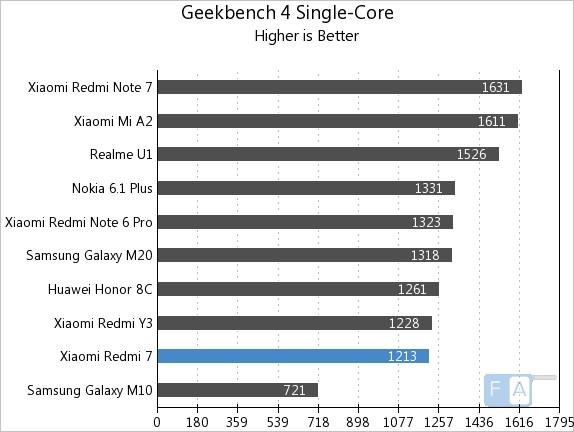
The Redmi 7 scored 1213 in Geekbench 4 single core.
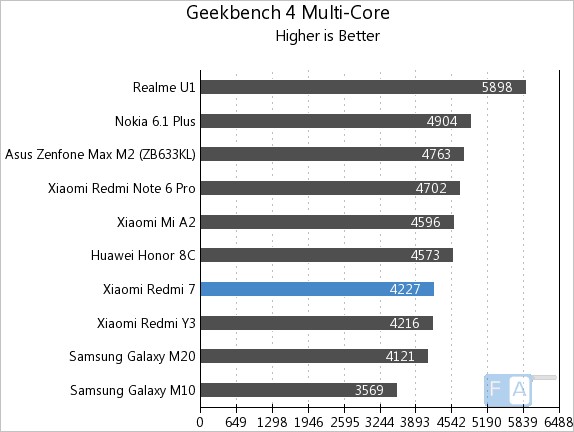
It obtained a score of 4227 on Geekbench 4 multicore but lost to Honor 8C and Asus Zenfone Max M2 both.
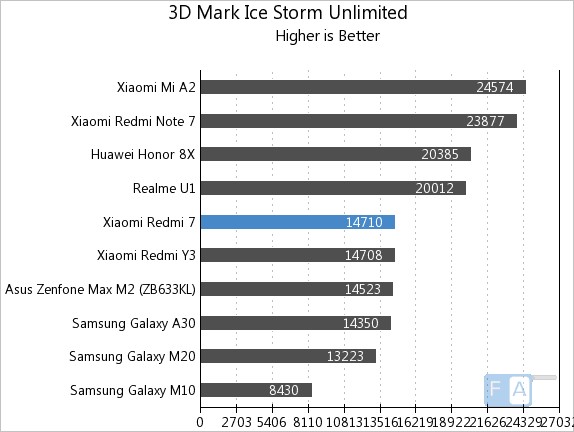
Redmi 7 scored 14710 on 3D Mark Ice Storm Unlimited leaving Asus Zenfone Max M2 behind by a little margin. We would like to mention that benchmark scores don’t always reflect the real world performance, and you shouldn’t be making a choice purely on the basis of benchmarks. Redmi 7 is a fairly decent phone with respect to performance if you leave the gaming aspect.
Battery life
After experimenting for the two generations, Xiaomi is back with the same good old 4000mAh battery that we used to love on Redmi devices. Redmi 7 packs a 4000mAh (typical)/3900mAh (minimum) non-removable battery under the hood. During our testing, the device easily lasted two days with moderate usage and for a more than a day with heavy usage.
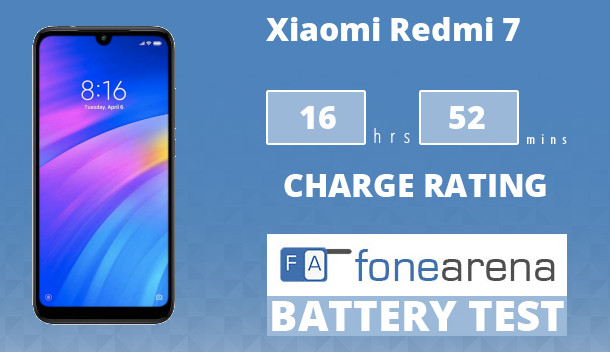
It acheived a One Charge Rating of 16 hours and 52 minutes, which is good for a phone with a 4000mAh battery. The phone doesn’t support quick charge, and you have to rely on the standard 5V/2A charger that comes in the box. It takes about 2 hours 20 minutes to charge it from 0 to 100%. The lack of quick charge is not a big concern as the device easily lasts for a day.
Conclusion
So who is Redmi 7 for, do we recommend it at a starting price of Rs. 7,999? We would recommend Redmi Note 7 3/32 variant over Redmi 7 in case you find it in stock as it brings a lot more to the table for just Rs. 1000 more than the 3/32 Redmi 7 variant, but sadly, Xiaomi has decided to discontinue Redmi Note 7 after the Redmi Note 7S launch in the country.
If you can not stretch your budget and still want for a good-looking smartphone with the latest dot-notch display, decent performance and good battery life for the price, then Redmi 7 is the smartphone to go for, but we will not recommend getting 2GB RAM variant as MIUI is a heavy Android skin. The phone is now on open sale across Amazon.in, Mi.com and Mi Home stores. In this price range, Redmi 7’s competitors are Asus Zenfone Max M2, Realme C2, and Nokia 5.1 Plus.
Pros
- Large ‘Dot Notch’ screen
- Good battery life
- Smooth day-to-day performance (apart from gaming)
- Dedicated SD card slot
- P2i coated Splash-resistant body
- Aura Smoke design
Cons
- Polycarbonate back is prone to fingerprints and scratches
- Average loudspeaker output
- Bloatware and ads in UI
Vigneshwar and Siraj (Photography) contributed to this review


